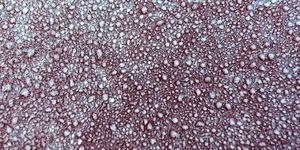When Cells Can't Take Out the Trash, Diseases Arise
Defective proteins have to be eliminated to maintain good health, and when they aren't removed and they build up, serious disorders can occur. Both Alzheimer's and Parkinson's disease have long been associated with an accumulation of proteins that are folded improperly. Cellular structures called lysosomes are involved in waste disposal in cells, and in recent years, scientists have observed that lysosomal storage disorders are linked to an increased risk of Parkinson's. Some researchers have hypothesized that lysosomal damage plays a central role in the neurodegenerative disorder.
When cells detect waste, such as damaged proteins that have accumulated, they can initiate a cleanup process. The lysosome is sometimes known as the cell's recycling bin because damaged stuff can be brought there, and the parts get broken down in a process known as autophagy.
In Alzheimer's, damaged tau proteins are a known hallmark of the disease, and research has indicated that in the early stages of the disorder, problems with lysosomes and autophagy arise in cells. These defects are thought to play a role in the progression of the disease. In Parkinson's, if there is damage in organelles called mitochondria, they're not removed properly. That breakdown happens in areas of the brain where dopamine is released, leading to motor dysfunction. Defects in autophay are also thought to play a role in Parkinson's.
An international team of researchers has now learned more about the autophagy process. Autophagosomes are tiny sacs that form around the damaged parts of cells that are being sent to the lysosome for degradation. Reporting in the Journal of Biological Chemistry, the research team revealed new details about the proteins that generate the autophagosome, and how they are structured.
Additional findings from the team were reported in Nature Communications. If cells can't get enough nutrients, a process called bulk autophagy might be initiated. But when specific things get flagged for cleanup, selective autophagy occurs. This study has shown that in yeast, a protein called Vac8 orchestrates the interaction between various molecules involved in autophagy and a cell structure called the vacuole. Vac8 is anchored to the vacuole, and its role in selective autophagy had been unclear until this research.
A detailed understanding of autophagy and the formation of autophagosomes may provide new insights into neurodegenerative diseases and other disorders.
Sources: Medical University of Vienna, Journal of Biological Chemistry, Nature Communications









